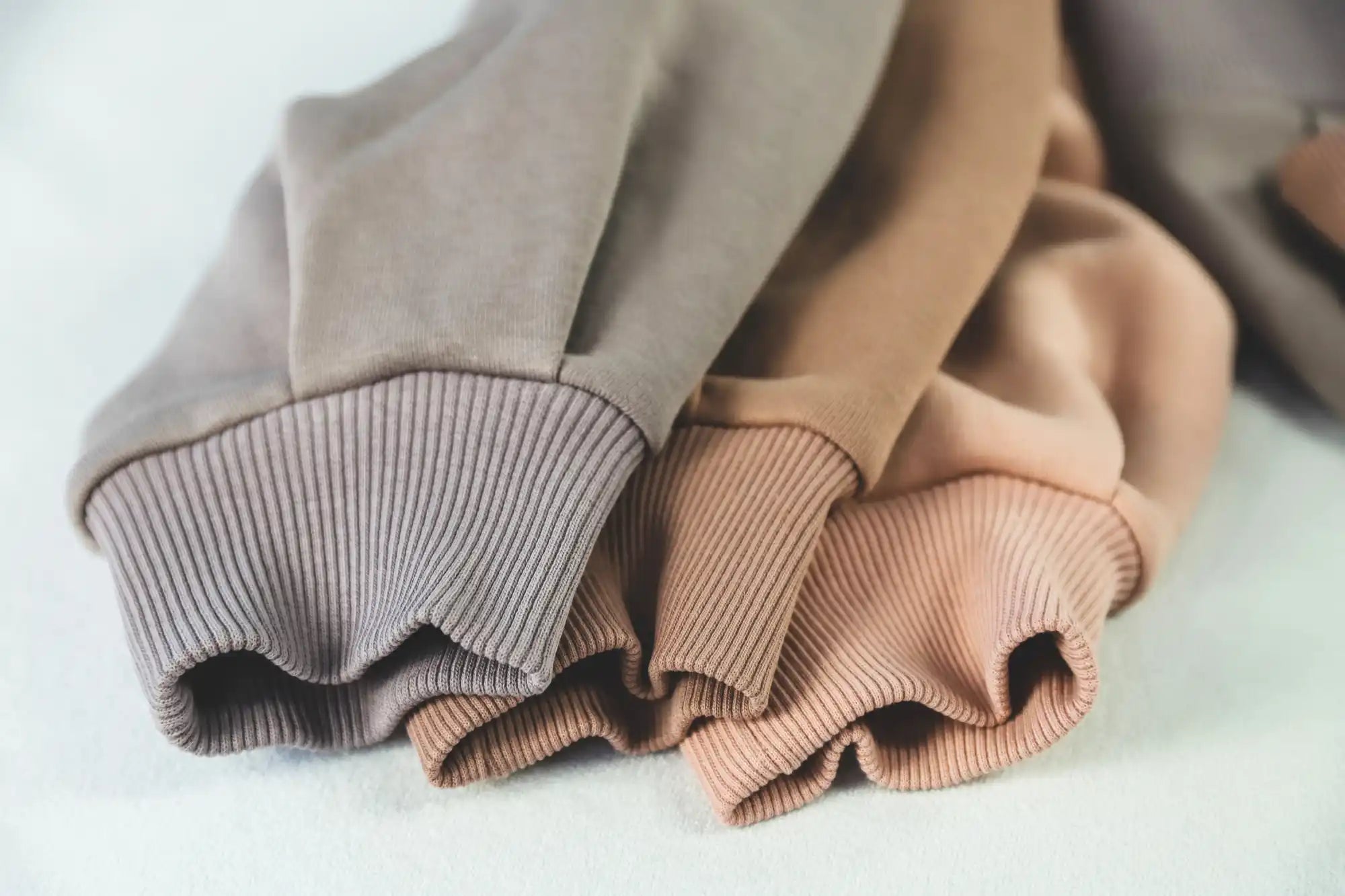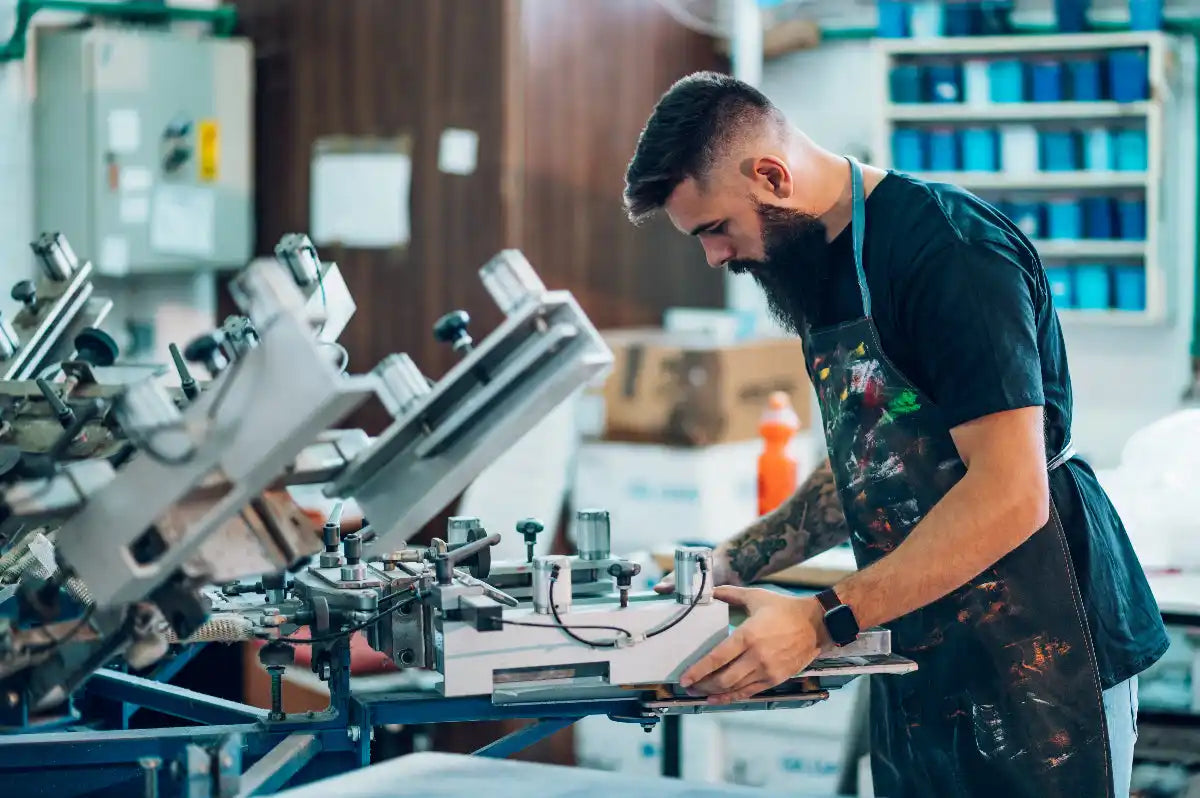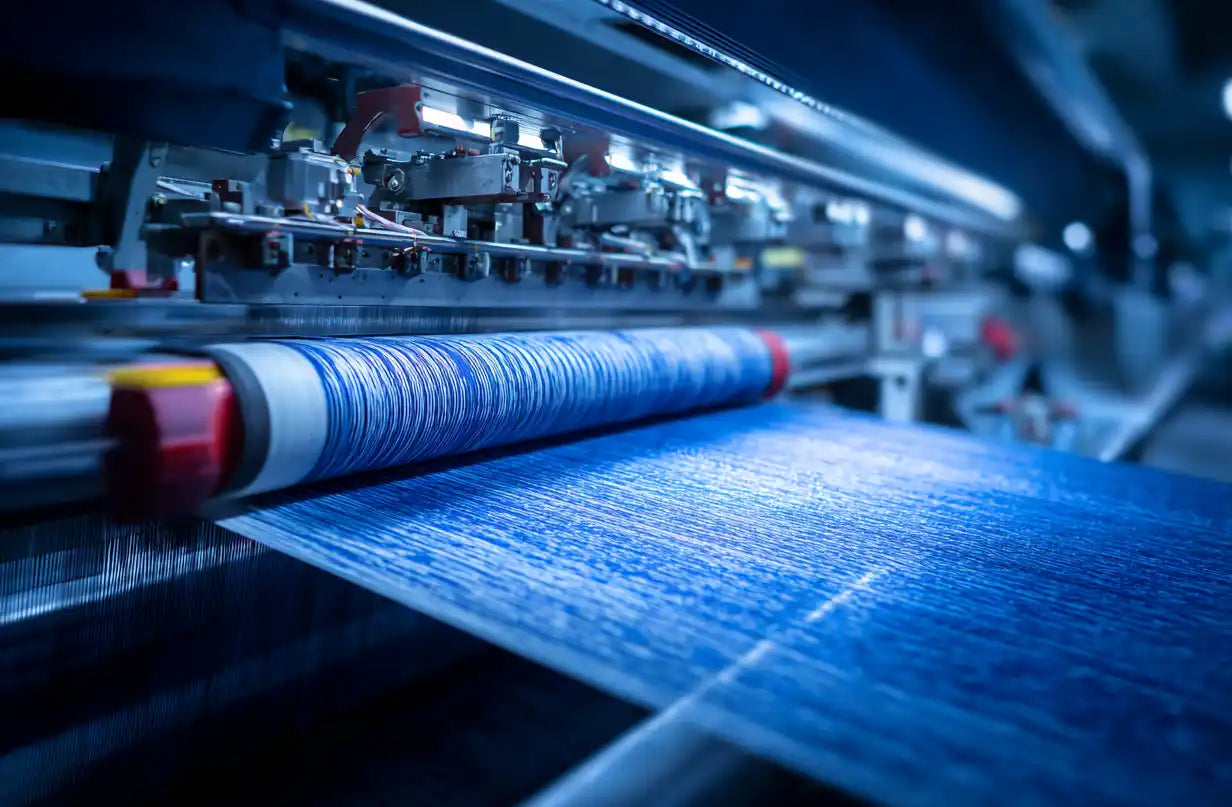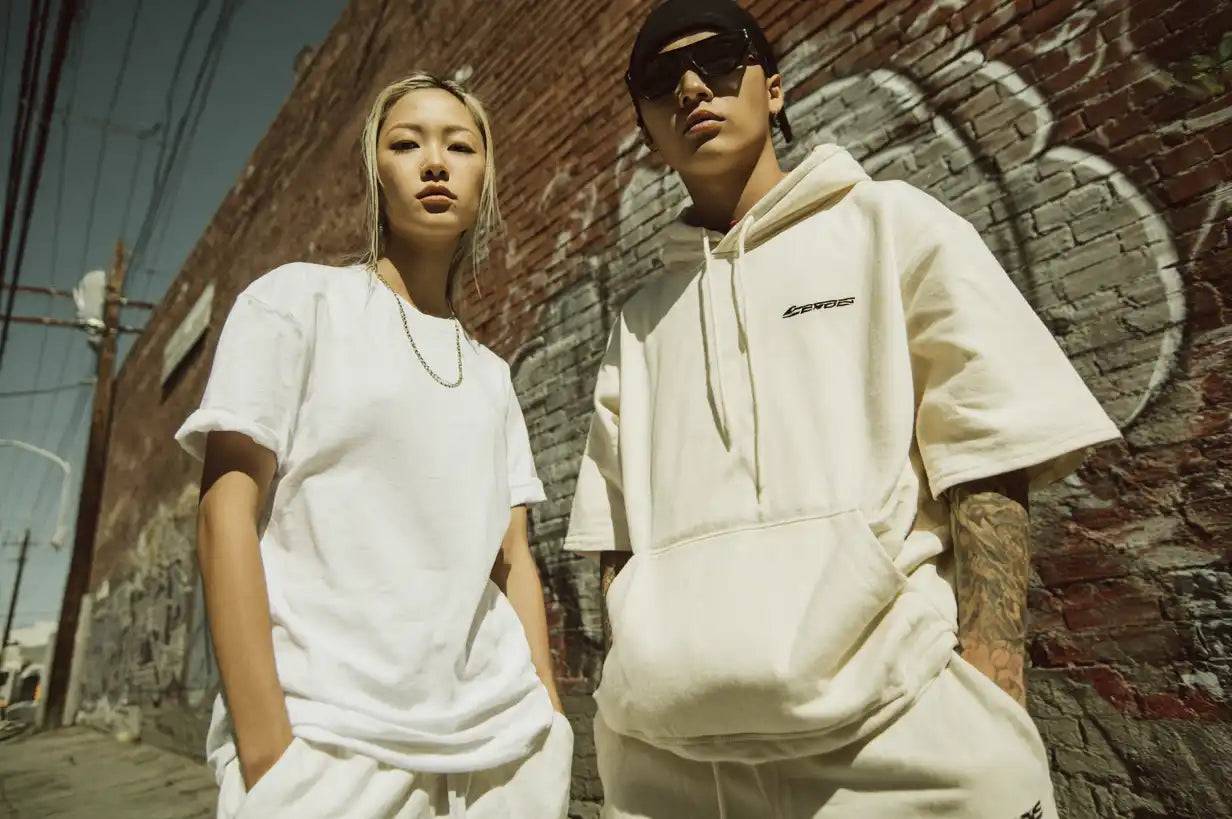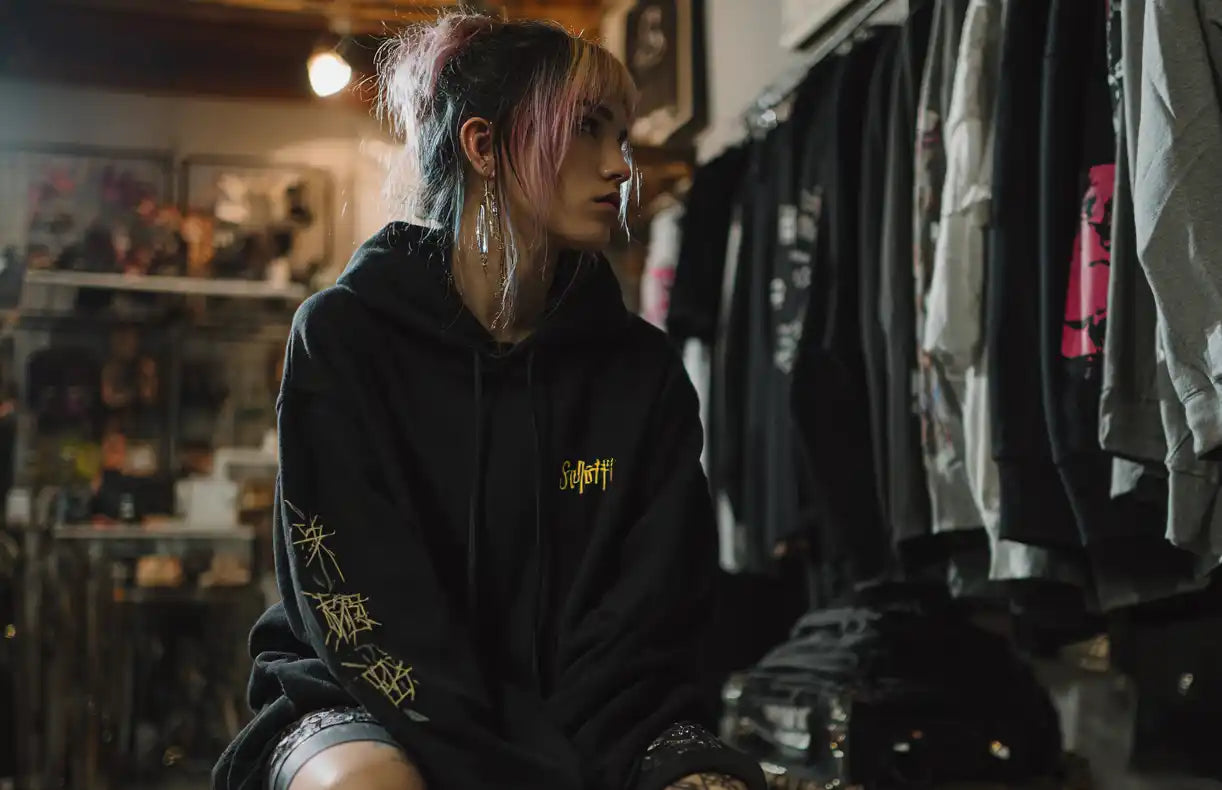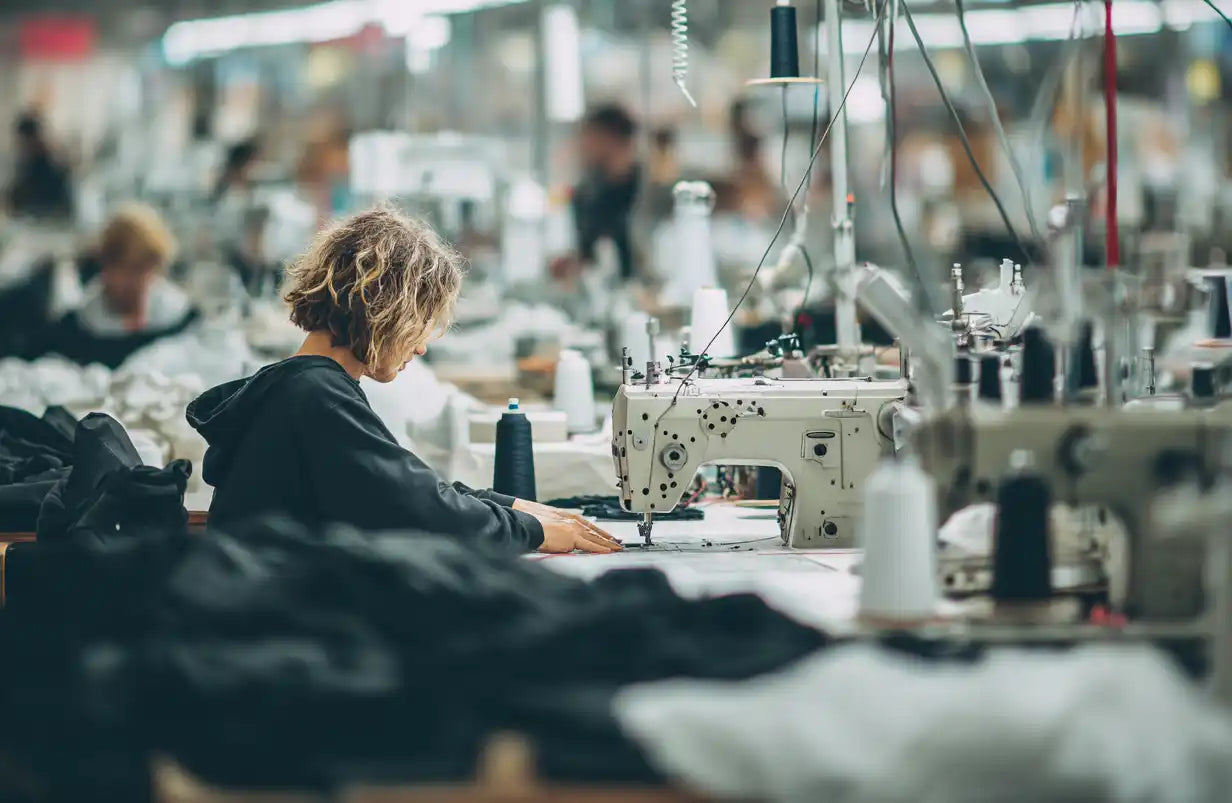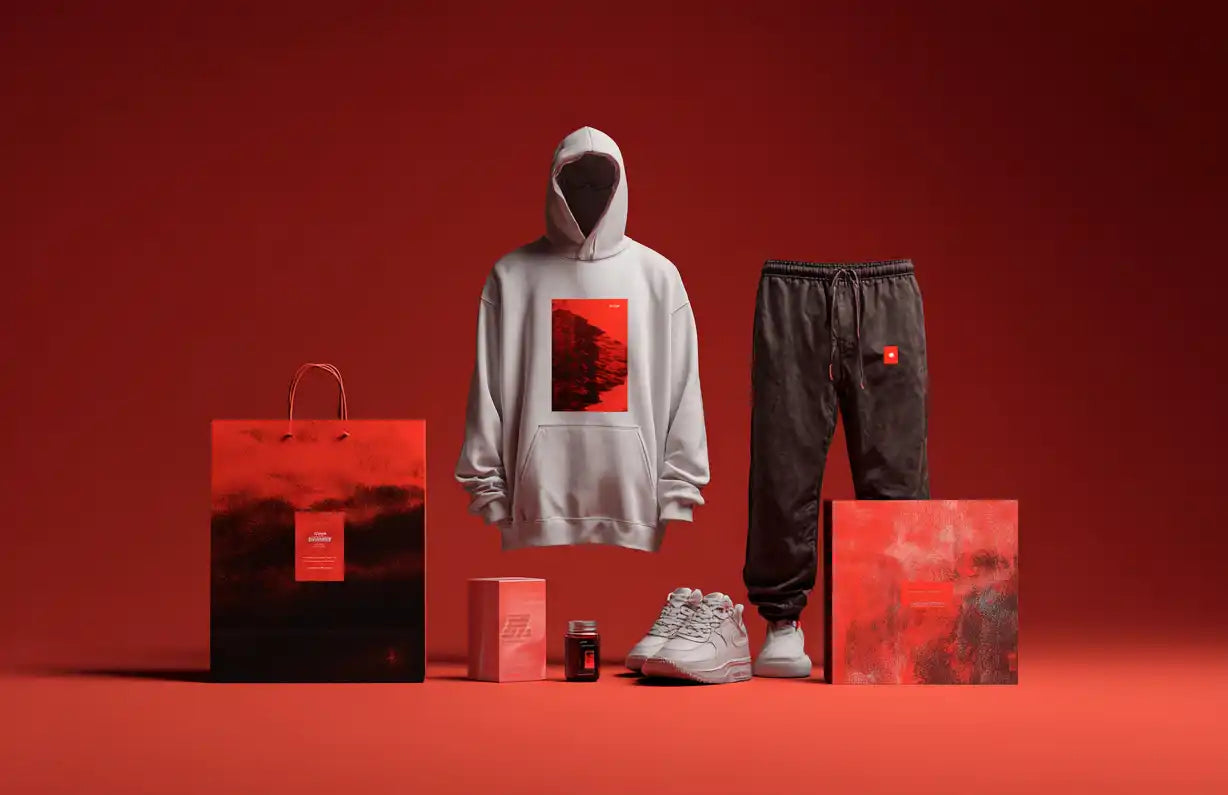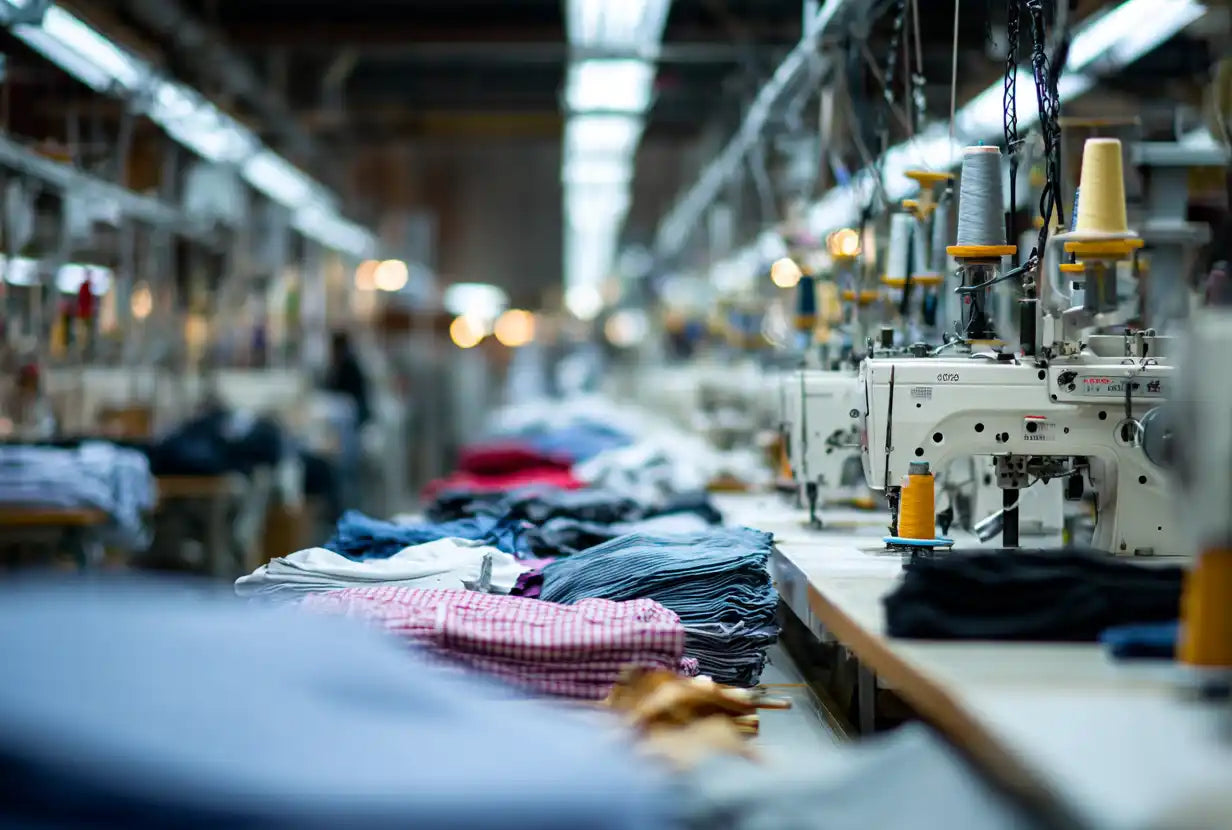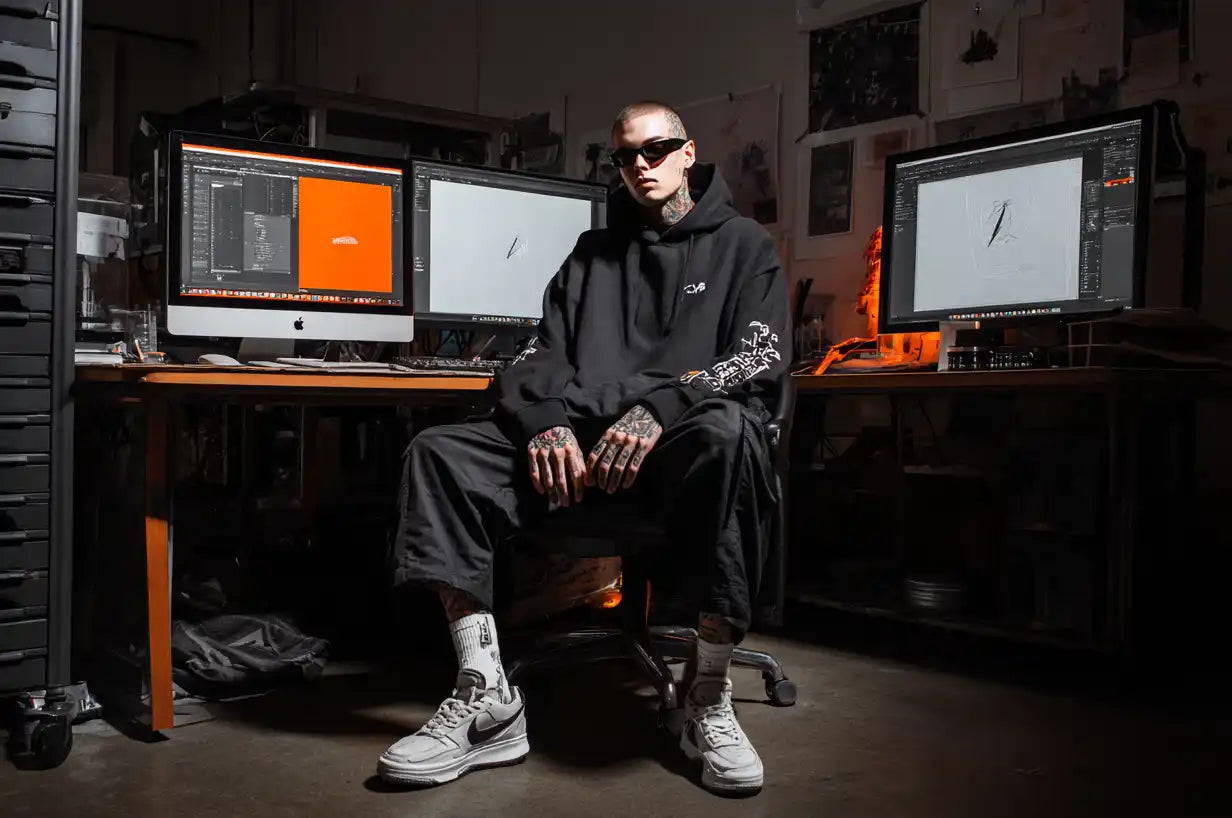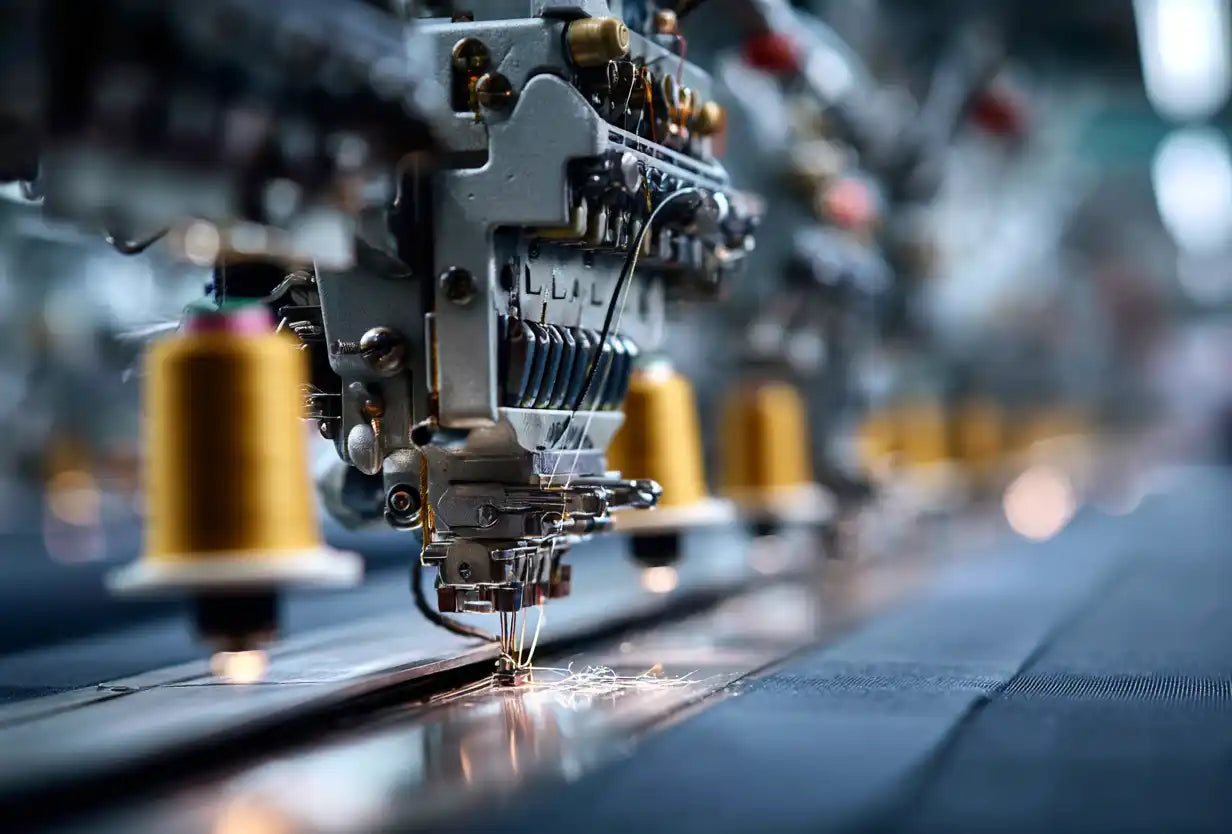Why straight leg joggers are the must-have piece for modern athleisure brands
Straight leg joggers are redefining comfort, silhouette, and commercial opportunity in contemporary athleisure. Evolving from casual loungewear into a premium retail staple, straight leg joggers combine a tailored, tapered-free hem with performance-minded materials. For brands that want a versatile garment that sells across retail, DTC and private label channels, the straight leg jogger offers a neutral, gender-inclusive silhouette that converts well online and in stores.
At Athleisure Basics we manufacture custom straight leg joggers in Portugal — balancing technical fabrics, EU-compliant ethics, and low minimum order quantities that let startups and established brands scale with confidence.

Market momentum in 2025: demand and opportunity
In 2025, consumer demand for high-quality comfort apparel continued to accelerate. Across the EU, jogger sales grew substantially: sector-wide figures show a 23% year-over-year increase in the region, driven by hybrid lifestyles that blend work, fitness, and everyday life. Straight leg joggers outperform many other cuts because their clean line is both fashionable and functional — a perfect match for streetwear, casual lifestyle, and hybrid performance collections.
Portugal as a strategic manufacturing hub
Choosing the right production location has direct implications for lead time, costs, and sustainability. Portugal remains the #1 destination in Europe for premium sustainable manufacturing because of its ethical labor standards, strong textile expertise, and short supply chains that reduce transportation emissions and lead time. Portugal's local ecosystem supports lower MOQs (50–100 units), efficient sampling and quick turnarounds — advantages that directly improve cashflow and speed-to-market for EU-based brands.
For a deep dive into sourcing and quality production in Portugal, see our guide on how to find a reliable clothing manufacturer in Portugal.
Design, fit and product development best practices
Designing a straight leg jogger that fits multiple body types while preserving a clean silhouette requires precise patternmaking and robust size grading. Key product development steps include:
- Creating a fit benchmark sample and documenting ease values for each size.
- Defining waistband options (elastic-only vs. drawstring) to match brand positioning.
- Selecting hem finishes to maintain structure without a cuffed look.
- Running 2–3 pre-production fit rounds to eliminate inconsistent sizing and reduce returns.
Downloadable tech-pack resources and templates help streamline this process — check our Clothing Tech Pack Guide for a step-by-step checklist brands rely on for consistent sampling.
Fabric selection: balancing comfort, durability and sustainability
Fabric choice is the single most important material decision when producing straight leg joggers. Fabric determines drape, recovery, how the garment holds shape after washing, and the overall perceived quality. Popular and effective options for straight leg joggers include:
Organic cotton and cotton-fleece blends — soft handfeel, ideal for lifestyle and streetwear lines; superior for branding that prioritizes natural fibers.
Recycled polyester and performance blends — moisture-wicking, durable, and suited to active collections where sweat management and quick drying matter.
Tencel™ / Modal blends — premium next-to-skin feel for elevated capsule collections and premium price points.
In 2025, Portugal manufacturers reported a higher share of sustainable materials across production runs. Brands looking to highlight sustainability should request certifications and material origin documentation during sourcing; Athleisure Basics supports audits and material traceability to validate claims.
Manufacturing timelines, MOQ and cost considerations
Practical production metrics directly affect budgeting and product launches. Typical timelines and MOQ guidance for straight leg joggers manufactured in Portugal:
Sampling: 7–10 business days (pattern, fit, and fabric swatches).
Production lead time: 4–6 weeks post-approval for most small-batch runs.
MOQ: 50–100 units per color/style — ideal for startups testing product-market fit.
Shipping within EU: 3–5 days transit to central warehouses.
Estimated unit cost: €17–€25/unit depending on fabric and customization.
These metrics are supported by Portuguese industry performance in 2025: apparel exports grew by 12% YoY and manufacturers reported average EU delivery times around 4–6 weeks. Faster lead times and low MOQs are among Portugal’s strongest selling points for brands that need to move quickly without compromising quality.
Customization options that matter to brands
Customization is a major value driver. The most requested custom options for straight leg joggers include:
- Custom fabric blends or branded fabric tags
- Embroidery and woven labels for premium brand finish
- Screen prints and placement prints for seasonal drops
- Special packaging, hangtags and private label options
When deciding on customizations, brands should prioritize what customers will notice first — fit and fabric — before layered branding. For technical detail on packaging and finishing options, refer to our article on dyeing, finishing & white label success.
Quality control and compliance
Quality control should be defined in your tech pack and enforced at three stages: pre-production (fabric QC), in-line production checks (stitching & measurements), and final inspection (AQL sampling). Portugal-based factories commonly support AQL sampling and can provide measurement reports and photo records for each batch, which reduces the risk of costly returns and preserves brand reputation.
Case study: Berlin streetwear brand (scaling with Portugal)
In 2024 a Berlin label partnered with Athleisure Basics to launch a unisex straight leg jogger line. The brand selected organic cotton-fleece and used a 50-unit low MOQ program to test two colorways. Results after the first production run:
- Profit margins rose by 42% compared to prior Asian sourcing due to lower returns and improved sizing precision.
- Initial delivery time to their EU warehouse: under 5 weeks.
- Zero returns on fit after two iterative samples and an updated size guide implementation.
How to plan a successful straight leg jogger collection (step-by-step)
Actionable launch plan for brands:
- Finalize core silhouette and fabric pairings (1–2 options for initial drop).
- Create a tech pack with graded specs and a fit benchmark sample.
- Request fabric swatches and a pre-production sample (allow 7–10 business days).
- Approve the sample and schedule a production run (4–6 weeks lead time).
- Plan EU warehouse logistics and marketing (shipping 3–5 days within EU).
If you need a production partner or quote, start the process at our contact page — we support startups through to enterprise brands.
Why Portugal beats many other hubs for straight leg joggers
Compared to alternative manufacturing regions, Portugal offers a unique combination of low MOQs, high sustainability standards, faster lead times and EU-friendly logistics. For brands that need agility, proximity and quality, Portugal often yields better unit economics and fewer headaches around customs or long sea freight delays.
Packaging, shipping and post-production services
Packaging makes a difference for premium positioning. Options include custom polybags, recycled hangtags, and elegant tissue wrap for premium orders. Portugal suppliers can manage fulfillment and dropship directly to EU warehouses, saving brands time and logistics costs.
Retail-ready product strategies
Retail strategies that increase conversion for straight leg joggers:
- Offer clear size guides with photographed fit examples and measurements.
- Feature fabric close-ups and wash tests on product pages to reduce returns.
- Bundle joggers with matching tops for cross-sell opportunities.
Closing thoughts: product longevity and brand trust
Straight leg joggers are more than a trend: they’re a durable product line building block that blends comfort and a modern look. With the right fabric choices, development process, and a Portugal manufacturing partner who offers low MOQs and fast lead times, brands can capture market demand quickly and profitably.
Frequently Asked Questions
Manufacturing in Portugal
1. Why should I manufacture straight leg joggers in Portugal instead of China or Turkey?
Manufacturing in Portugal reduces lead times (commonly 4–6 weeks to EU), eliminates import duties within the EU, and offers high sustainability standards and quality control. Portuguese factories commonly accept low MOQs (50–100 units), which helps startups test product-market fit faster and with lower financial risk. Portugal also provides superior proximity to EU distribution centers, lowering transit time and shipping carbon footprint.
For practical tips on vetting factories, see our full guide: How to Find a Reliable Clothing Manufacturer in Portugal.
2. What typical MOQs can I expect from Portuguese suppliers for joggers?
Many Portugal-based suppliers specialize in low MOQ programs for premium blanks and cut-and-sew runs. Expect typical MOQs of 50–100 units per color/style for cut-and-sew straight leg joggers. MOQs vary by fabric and customization level; highly specialized prints or heavy customization can raise MOQ requirements.
If you want low MOQ strategies and pricing, consult our low MOQ playbook: Low MOQ Clothing Portugal.
3. How long does sampling and production take for a small batch of joggers in Portugal?
Sampling typically takes 7–10 business days (including pattern adjustments and swatch approvals). Production for small batches generally ranges from 4–6 weeks after sample approval. Shipping to an EU warehouse is usually 3–5 days. These timeframes enable brands to move from approval to market in under two months when schedules are well managed.
4. Are Portugal factories certified for sustainable and ethical manufacture?
Many Portuguese factories hold certifications or audit reports demonstrating compliance with ethical labor standards and environmental practices. In 2025, Portugal reported higher shares of sustainable materials in production compared to many other hubs. When sourcing, request supplier certifications, COAs for recycled fibers, and audits to verify claims.
Read more about sustainable production in Portugal in our article: Made in Portugal Clothing: Sustainable Production.
Fabrics & Materials
1. Which fabric is best for premium straight leg joggers that balance durability and softness?
A cotton-fleece blend with a tighter stitch count is a reliable choice for premium joggers: it offers a soft hand, visual structure, and durability. For elevated lines, blended options with Tencel™/Modal provide silkier drape while keeping the look premium. Recycled polyester blends deliver improved moisture management for performance-focused pieces.
2. How do sustainable fabrics affect cost and product positioning?
Sustainable fabrics like organic cotton and certified recycled polyester typically increase raw material costs but improve perceived value and reduce environmental impact. Brands using sustainable fabrics can justify higher price points and may realize marketing benefits in conscious consumer segments. Portugal’s local supply chains often make sustainable sourcing easier and more transparent.
3. What fabric weight is appropriate for straight leg joggers in a temperate European market?
For temperate climates, a 280–340 gsm cotton-fleece or similar knit provides a balance of warmth and structure. Lighter French terry (220–260 gsm) suits warmer seasons and premium lounge collections. Discuss target climate and wearer use case with your manufacturer when requesting swatches.
4. Should I ask for pre-washed fabric or garment-dye for joggers?
Pre-wash or enzyme-wash treatments reduce shrinkage and deliver consistent handfeel. Garment dyeing can give a softer aesthetic but may slightly increase costs and color variation risks. For small batches, piece-dyeing in Portugal is feasible but you should align color tolerances and test wash cycles during sampling.
Customization & Private Labeling
1. What customization options will most impact perceived quality?
Embroidery, woven neck labels, and high-quality yarn-dyed ribbing deliver clear quality signals to customers. Reinforced stitching in stress areas and a clean waistband finish also improve durability and brand perception. Packaging and hangtags are additional touchpoints to elevate perceived value.
2. Can I do small-run custom colorways and labeling for direct-to-consumer launches?
Yes. Portugal’s low-MOQ capacity makes small-run custom colorways and private label options viable. Many factories accept 50–100 unit runs per color with custom labels and tags. Plan for slightly higher per-unit costs on very small runs but stronger margin control and less inventory risk.
3. How do I protect my brand's designs and IP when working with manufacturers?
Use clear contracts and NDAs where appropriate, and include IP clauses in purchase agreements. Limit the number of tech-pack versions shared, and date-stamp design files. Work with trusted factories you can audit; many Portuguese manufacturers have longstanding relationships with EU brands and are used to handling private label requirements.
4. What’s the best way to test custom prints or embroideries before full production?
Order a pre-production sample with the exact print and placement. Test the sample through wash cycles and on multiple fabric swatches. For complex print placements, request a high-resolution photo proof and a sample to confirm ink adhesion and colorfastness prior to bulk production.
Implementation — What we changed for SEO & UX
The following improvements have been implemented in this article:
- H1/H2 structure and shorter meta title/description for CTR and clarity.
- Long-form content expansion (product development, timelines, fabrics, case study and practical steps) to strengthen topical authority.
- Interactive FAQ markup using <details> <summary> so search engines can pick up structured answers and users can quickly find answers.
- Contextual internal links inserted to product collections and helpful blog resources to improve navigation and distribute link equity.
- Added E-E-A-T signals: sourcing references, regional stats, and a real case study summary to show experience and authority.
Conclusion & Summary
Straight leg joggers have become a permanent fixture in modern athleisure because they combine versatility, comfort and style. When manufactured in Portugal, joggers benefit from shorter lead times, low MOQs, and higher sustainability standards. For brands launching DTC or wholesale collections, Portugal offers a practical combination of quality and agility: fast sampling, robust customization, and EU-friendly logistics.
If you’re ready to develop a straight leg jogger collection, our recommended next steps are: finalize your core fabrics (order swatches), create a clear tech pack, request a pre-production sample, and reserve a low-MOQ production slot. For help at any step, reach out via our contact page — we help brands go from concept to shelf with transparent pricing and predictable timelines.
Featured resources: Shop jogger blanks | Low MOQ guide | Tech pack guide.

